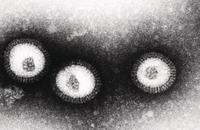Resurrects the deadly 1918 virus

In 1918, a flu epidemic caused nearly 40 million deaths worldwide. Now, American scientists have managed to resurrect this virus in the laboratory. The aim is to unravel the secrets of the virus in the conviction that it will serve to fight the bird virus. Both are viruses that have passed from birds to humans.
To resuscitate the 1918 flu virus, they have departed from the samples of a friend who died at that time. In fact, the corpse has been preserved for many years in the Alaska permine. From their lung tissue they have recovered RNA from the virus and converted it into DNA for sequencing. It should be noted that the virus has only eight genes, between the 30,000 and 40,000 that humans have.
The entire sequence has now been published and, from this information, the DNA of the virus has been synthesized in another laboratory. Subsequently, this DNA has been introduced into human renal cells, thus obtaining virus particles. They have isolated and injected them into the mouse.
In the laboratory, the virus has shown that it has perfectly preserved the ability to cause death. In five days all the contaminated mice were dead. If the virus enters the lung cells, within four days it produces 39,000 times more viruses than a conventional influenza virus.
The experiment provokes the suspicion of some because they fear that the virus will escape. In addition, since the genome sequence is in a database, anyone can pick it up and believe there is a risk of rebuilding it. However, research supporters say there is a higher risk in nature.





